Retention
Use our Retention report to understand how frequently users return to your product.
Introduction
The Retention report helps you understand how different user cohorts, defined by starting events on specific dates, retain over time. This analysis is crucial for identifying patterns in user behavior and enhancing product engagement.
Watch our Retention Training Video.
Key Inputs
- Subject: Define the subject you want to measure retention for, such as User ID or Visitor ID.
- Cohort: Set the date range for users you want to analyze. This selects users who performed your starting event within that period.
- Retained: Choose the interval (Daily, Weekly, Monthly) to view retention. This segments your cohort into time buckets.
- Looking Forward: Specify the number of days to look forward from the last date of your cohort period. Update this only if the last date is in the past.
- Example: If your cohort date range is Jan 4th - Jan 6th, 2025, and today is Jan 6th, you don't need to look forward as there's no additional data.
- Measure As: Select how to measure retention based on retention types.
- Retention Based on: Decide whether to use Calendar Day or a 24-hour period to define a "day."
- Select your "Starting Event(s)" and "Returning Event(s)."
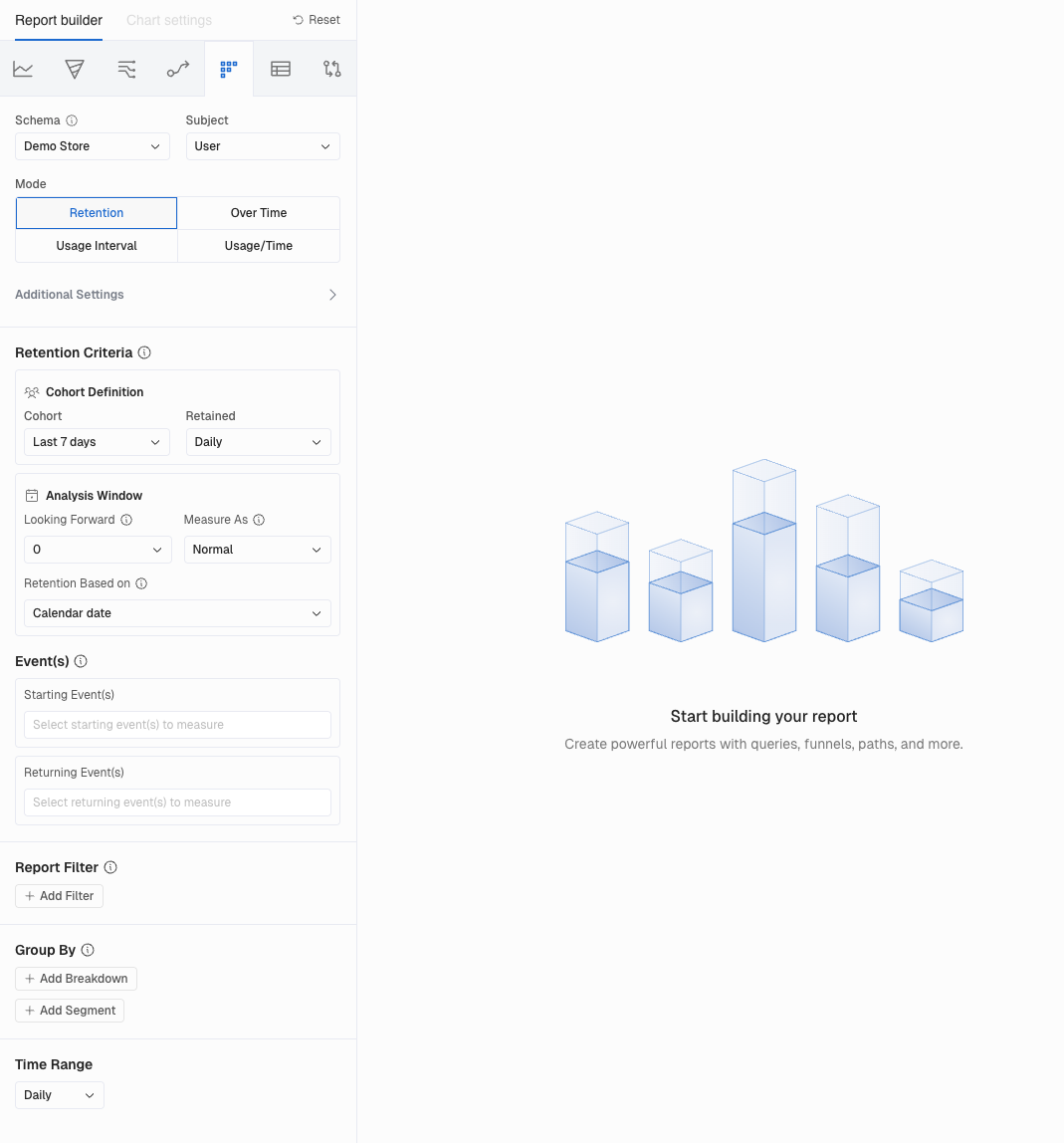
Selecting Your Time Unit for Cohort
In Kubit, first select the cohort of users who performed the 'Starting Event' during a specific period. The report will categorize these users based on the first day they did the starting event within your selected time window and interval.
Time intervals determine data representation:
- Daily/Weekly/Monthly: Users must perform the starting event within the interval, with results separated by each day/week/month.
- Example: Selecting 1/1 - 1/5 Daily shows a retention curve for each day.
- Each curve or row of data has its own Nth day.
- Example: Users performing the starting event on 1/1 have 1/2 as Day 1; those on 1/2 have 1/3 as Day 1.
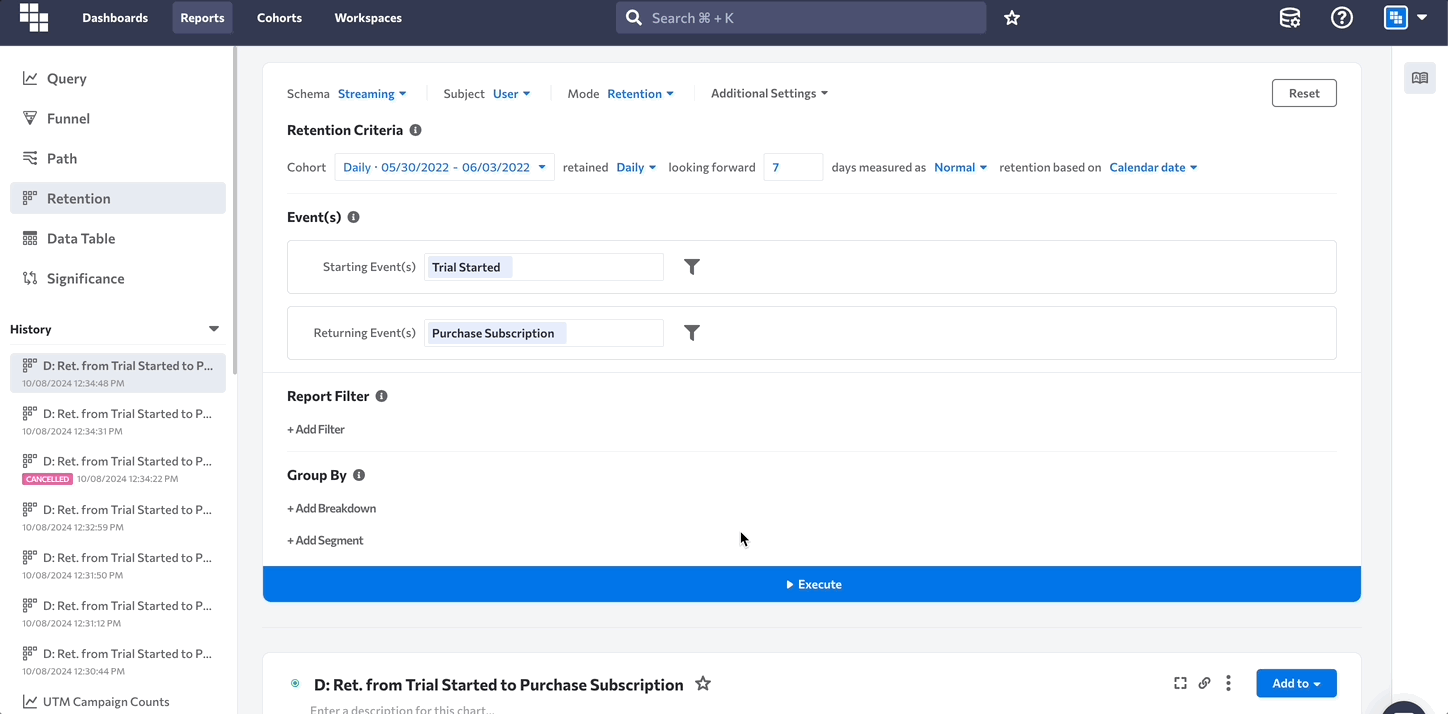
- All Time: Groups all users into a single cohort with the same Day 1, the day after the cohort period ends.
- Example: Selecting 1/1 - 1/5 All Time gives all users Day 1 as 1/6.
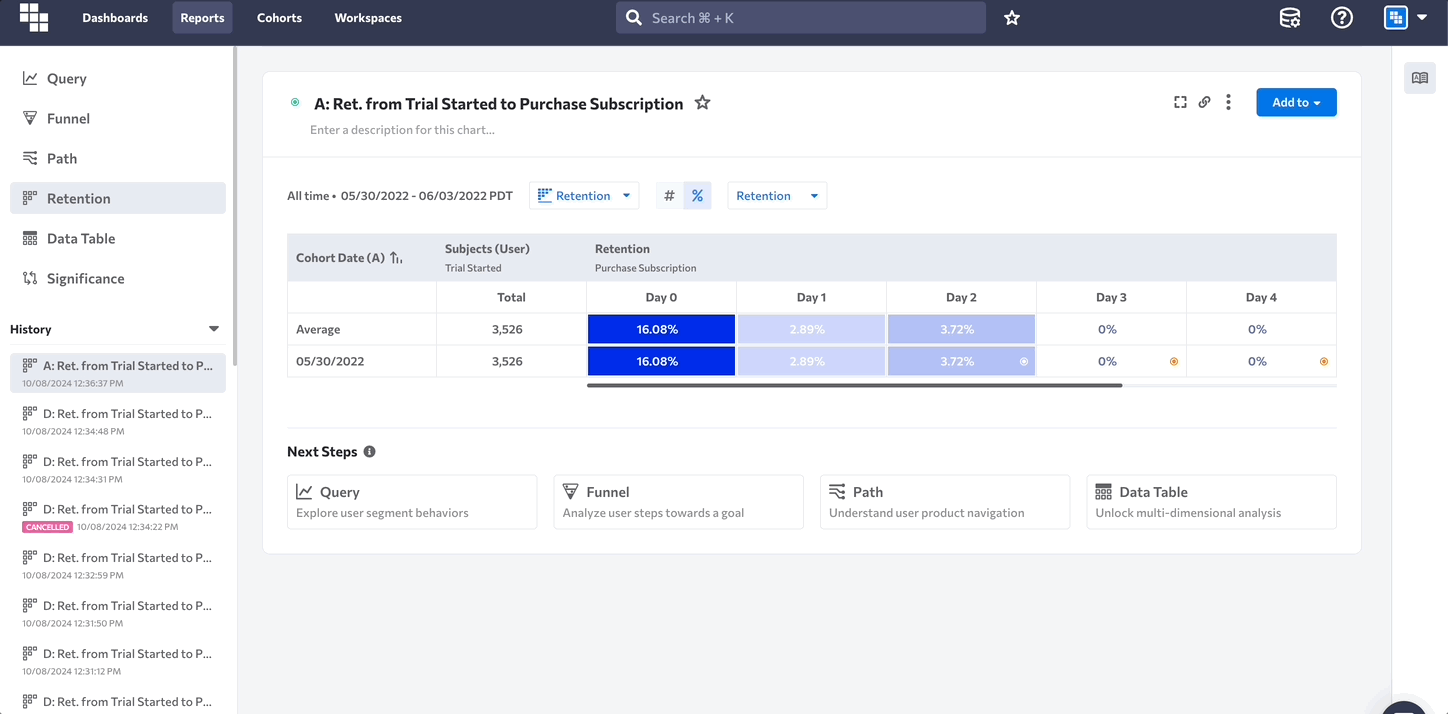
Retention Types
Kubit supports various retention measurement methods, each with common concepts.
Normal Retention
Counts all users in the starting cohort with at least one returning event on a given date. Useful for regular, short-term user returns.
Example: Measure retention of users who registered and then made a purchase.
- Starting Event: Register
- Returning Event: Purchase
- Cohort: May 30 - Jun 2, Daily Retention

Results:
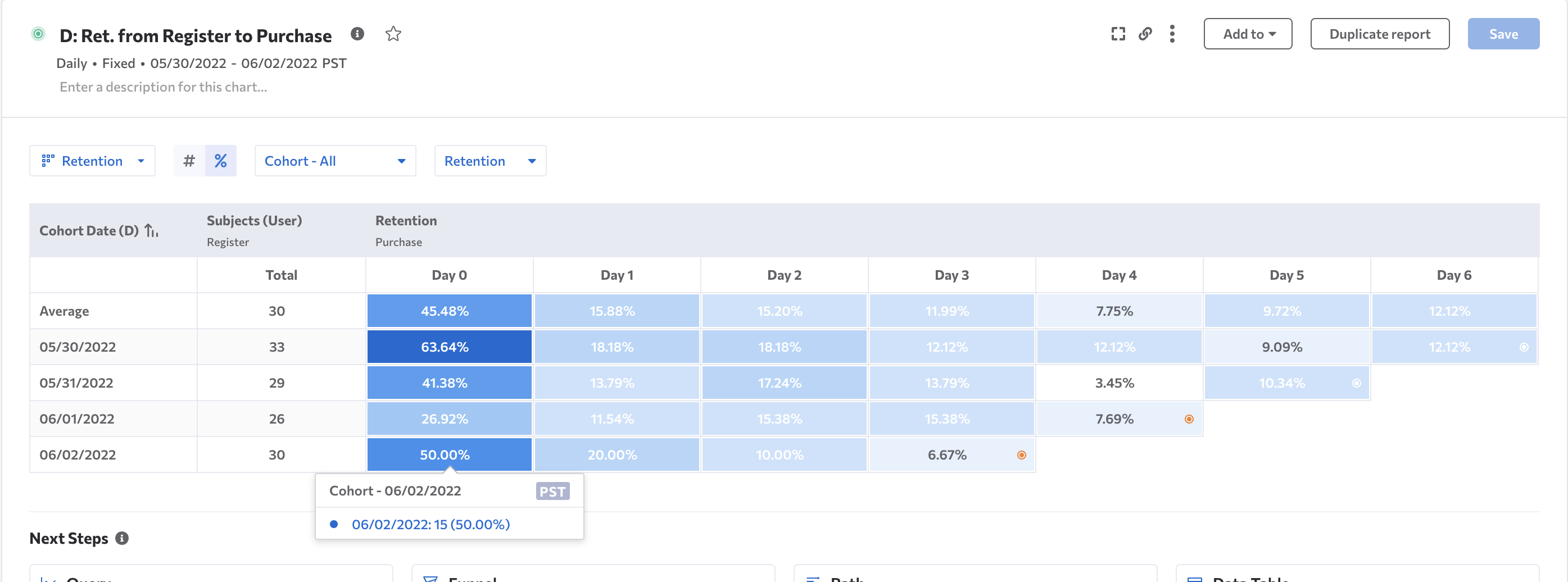
Unbounded Retention
Ideal for less frequent user returns, counting users on their return date and all prior dates.
Example: Measure retention of users who registered and made a purchase within 7 days.
- Starting Event: Register
- Returning Event: Purchase
- Cohort: May 30 - Jun 5, Daily Retention

Results:
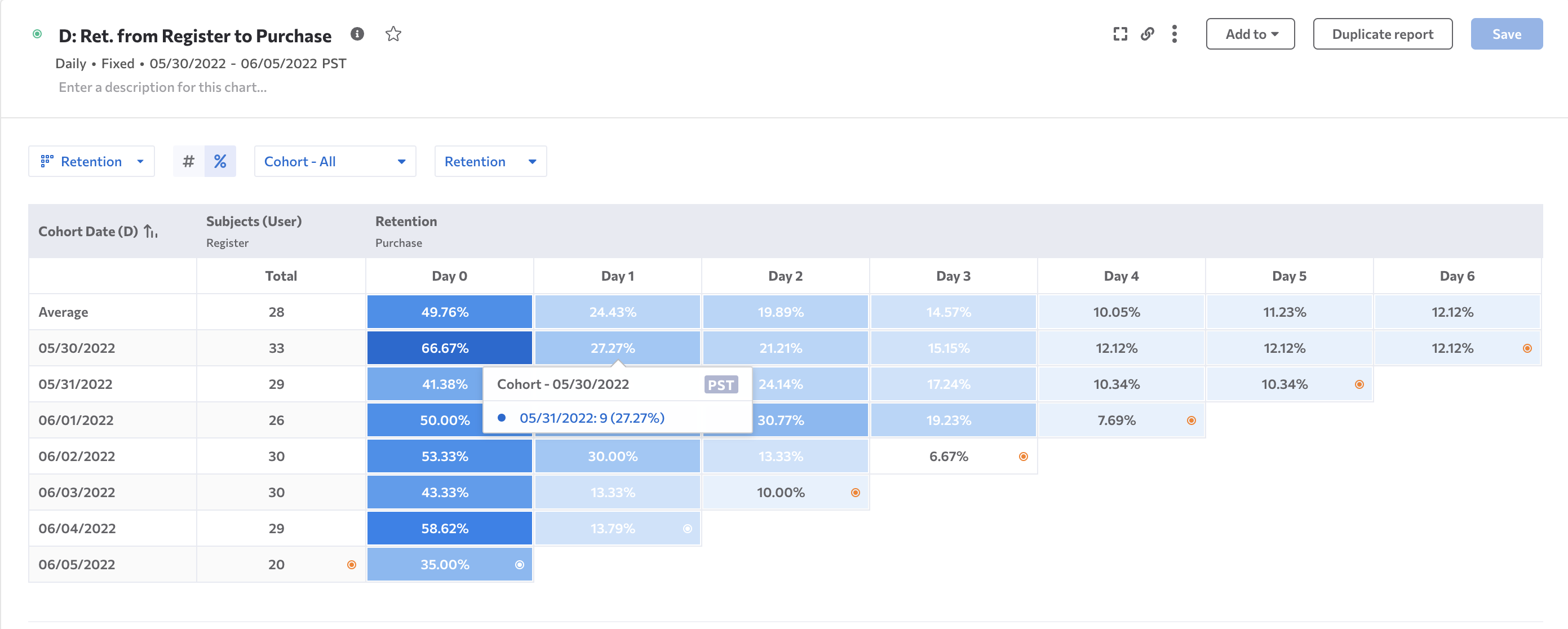
Rolling Retention
Counts users as retained if they perform the return event every day/week/month. Useful for high engagement scenarios.
Example: Measure retention of users who registered and made a purchase daily within 7 days.
- Starting Event: Register
- Returning Event: Purchase
- Cohort: May 30 - Jun 5, Daily Retention

Results:
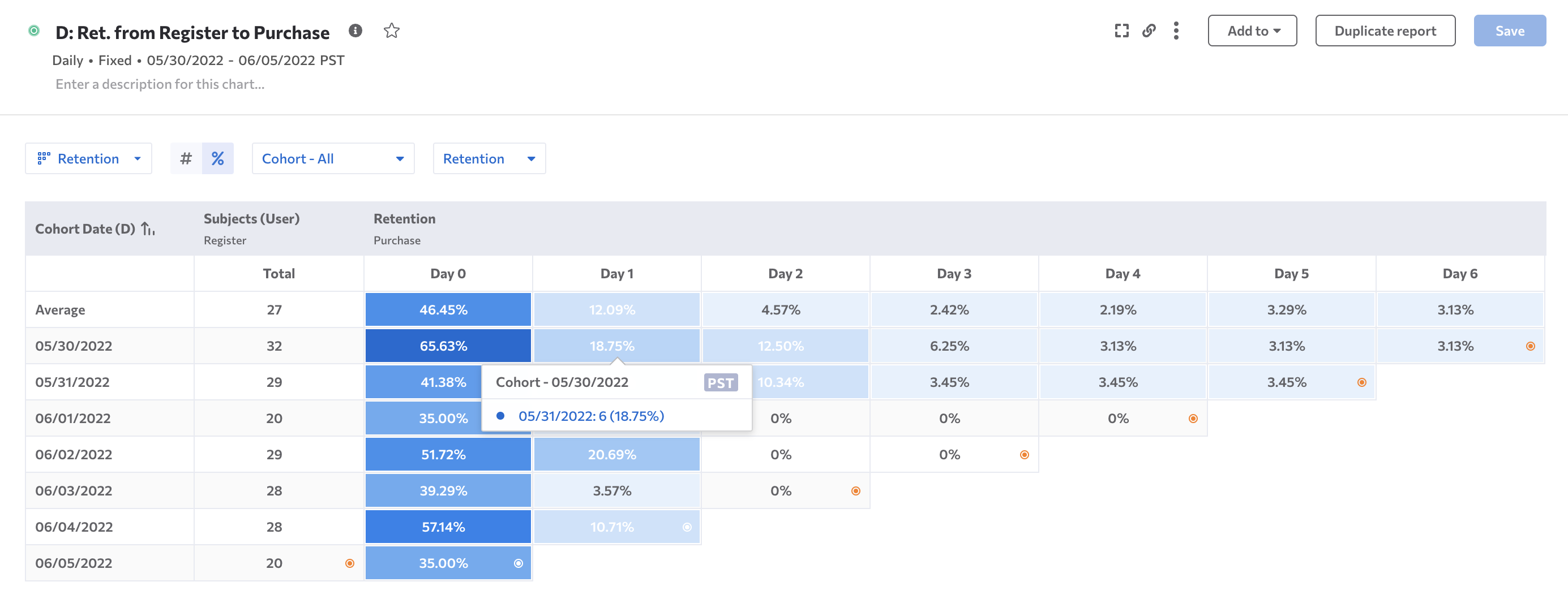
Retention Modes
Retention
Shows how user cohorts retain over time, the default mode for measuring retention rates.
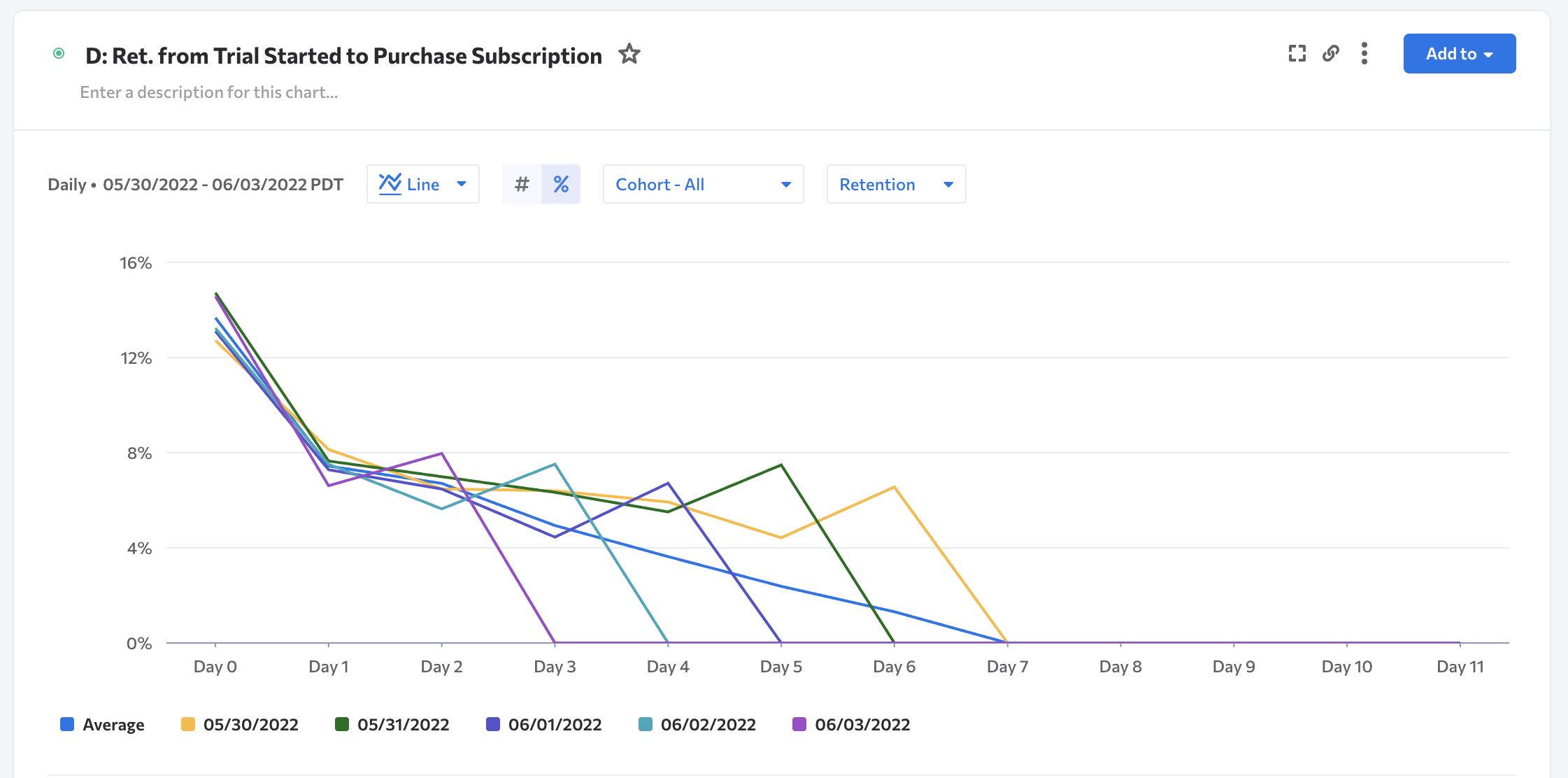
Retention Over Time
Plots trending retention rates for each time interval, helping you see improvements over time.
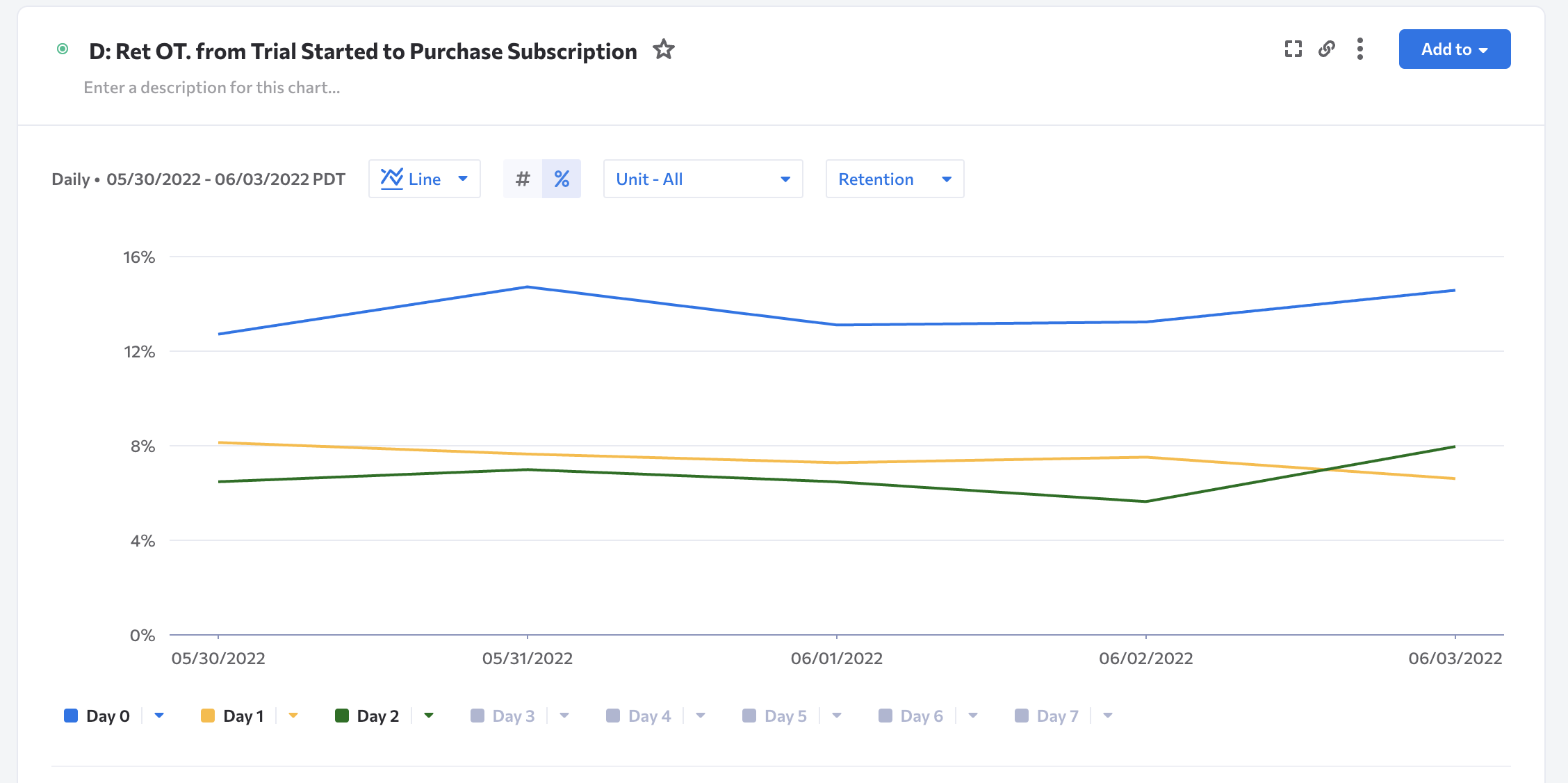
Usage Interval
Shows the typical usage interval of a feature, indicating when 50% of users perform the returning event.

Usage Interval Over Time
Displays how the usage interval changes over time, similar to Retention Over Time.
Measure Churn
Churn is the inverse of retention, measuring users who do not return. Switch between retention and churn without re-running analyses.

Retention Calculation Windows
Strict Calendar Date
Calculates retention based on calendar dates.
| Start Event | Return Event | Retained at Day |
|---|---|---|
| 2023-07-01 10 am | 2023-07-01 11 am | Day 0 |
| 2023-07-01 10 am | 2023-07-02 9 am | Day 1 |
| 2023-07-01 10 am | 2023-07-03 12 pm | Day 2 |
24-Hour Windows
Defines each day as a 24-hour interval from the start event.
| Start Event | Return Event | Retained at Day |
|---|---|---|
| 2023-07-01 10 am | 2023-07-01 11 am | Day 0 |
| 2023-07-01 10 am | 2023-07-02 9 am | Day 0 |
| 2023-07-01 10 am | 2023-07-03 12 pm | Day 2 |
Breakdown in Retention
Use the 'Average' toggle to display the average count for all breakdown groups.
Average toggle default with BreakdownThe toggle is on by default when Breakdown is selected.
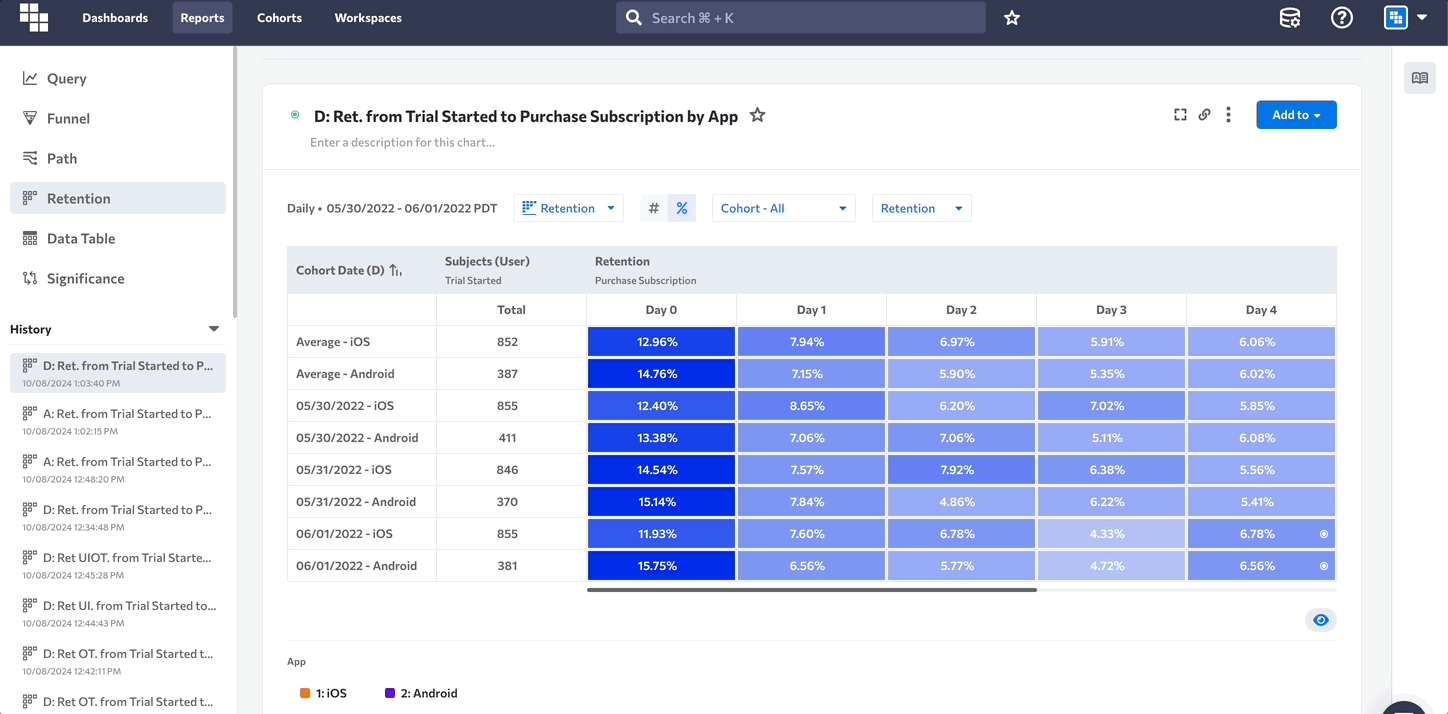
Advanced Retention Features
Attribution
- Linear: Assigns users to all cohorts when starting events occur.
- First: Assigns users only to the cohort for the first starting event day.
Group by
- Starting: Groups users by starting event.
- Global: Requires both starting and returning events to have the same attribute.
Updated 3 days ago